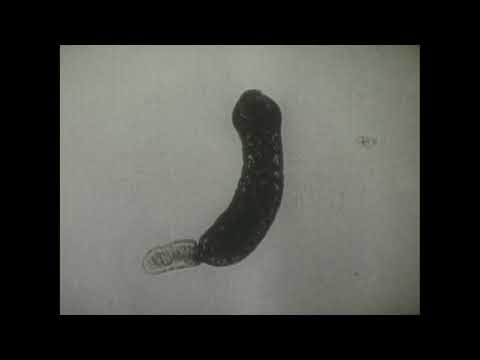
Life Cycle of Diphyllobothrium Latum (1950)
The film discusses the life cycle of the tapeworm Diphyllobothrium latum, affecting nearly 10 million people primarily in cooler northern regions. This parasite requires three hosts: a fish-eating mammal (like humans or dogs), two aquatic animals (copepods and fish, typically pike). The adult tapeworm resides in the small intestine, can grow between 3 to 30 feet, and may live for over a year. It releases hundreds of thousands of eggs daily, which pose health risks when they contaminate freshwater. The life cycle involves several larval stages, starting with the coracidium, which hatches from the egg and infects copepods. Infected copepods are then consumed by fish, where the tapeworm develops into its final larval form, plerocercoid, before being ingested by humans through undercooked fish. The adult tapeworm is characterized by its segmented body and reproductive features.
Keywords
Diphyllobothrium latum, tapeworm, life cycle, copepods, pike, human infection, freshwater contamination, larval stages, coracidium, plerocercoid, health risks
Email us at footage@avgeeks.com if you have questions about the footage and are interested in using it in your project.










